
In the River KATSURA --Vol.105--

Close to This and the Opposite Banks
The rainy season was over two weeks before. In the end of July it was very hot every day. Fishing evening rise had not been successful recently and only small fish made rises. On one evening I came to Kawamo in spite of repeated poor catch. Usually it felt cool before dusk but on that day a hot wind rather than an uncomfortably warm one was blowing. The water level was low and there was no sign of fish in the river.I knew all those disadvantages but came here to catch those two fish. I wanted to know who they were. One was that I had seen only the tail fin on the surface close to the bank almost a month before. I saw it a week before again but could not catch it. The other was staying at the opposite bank where the river got wider. It was such a strange fish that I called it a mouse fish. It was too small to aim at. But I wanted to catch it because I always got bites at the spot very close to the opposite bank and it never bit before dusk or when the fly was away the bank even a little. I got bites every time but could not hook it up, which made me mad for catch. Although it was a small fish, it aroused my fighting spirit.

The fish back with countless black spots on the dark-blue body appeared on the wave.
I was crazy about those two fish and prepared only for them. I aimed at shallow spots very close to both this and the opposite banks. I had to cast to the exact point and control the line turn properly enough to make the fly settle the surface first. The ideal rod to satisfy those demands was Aberdeen of 9ft. 6in. A long rod enabled me to cast the fly from high position. That was helpful to gain time before the line caused the drag at the opposite bank and also to shorten the wet part of the line and the leader which were soaked into the water at this bank.
I shortened almost 1 ft. out of the leader of 7ft. 6in. to make the turn performance better. I put only one fly to it, size 8 Peacock and Green. I chose it because it was made of the materials swaying in the water. Those materials were peacock herl used for the body and peacock sword used for the tail. Recently only a small number of sedges were flying in the evening and there was scarce rise to eat them. That was why I chose that fly but not a pattern like an adult sedge.
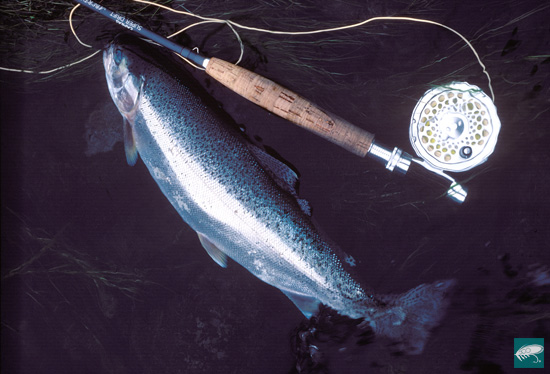
Pointed fins on the good-shaped body. It looked like a small Steelhead.
Measuring
I knew well the whereabouts of the fish at the opposite bank. But probably it was a very coward fish and never broke the surface before dusk. I tried to be careful not to scare the mouse fish. I cast the fly to the opposite bank at the lower reaches of its whereabouts. I fixed the line length so that the fly could settle within 30cm away the opposite bank. Then I retrieved the line until the line’s front end was in unison with the rod’s rear end. Finally I checked how many left-hand strokes to pull the line were needed to make the line extended to the target point. This method was called “measuring”, a technique to measure exactly the line length to fix. Because I had just joined the casting competition, I had confidence in casting the line with an error of less than 10cm at the river as wide as the River Katsura.I was ready. I walked 50m upstream and started fishing down slowly. I planned to fish in front of my target point at good timing. Soon the sign of evening covered me but there were a very small number of sedges. It was far from the storm of insects a month before.
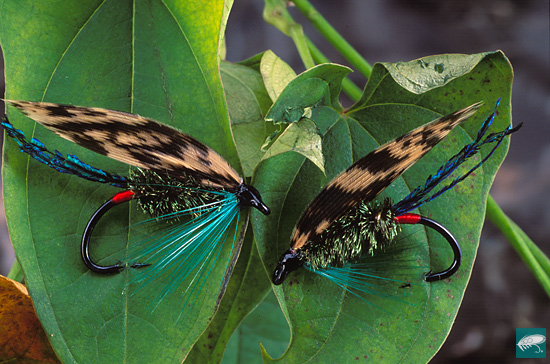
Peacock and Green was a great performer in both the daytime and the evening.
After I got only one bite from a tiny white fish, I fished downstream to the spot where I could see the mouse-fish shelter down the opposite bank. The opposite bank was covered with short shrubs, whose lower boughs spread towards the surface. I was sure that my mouse fish was staying just under those boughs. I stood at the spot I had marked and measured the line. What was easy to do in the daytime sometimes became difficult in the evening. In case my sense of distance was wrong in the evening, I made the line 50cm shorter than I had planned and started casting.
I could see where the line extended but not where the fly settled. I had confidence in the casting direction but got no bite. I extended the line 20cm longer and made the second casting. 20cm longer again and third casting. But the fly drifted without getting a bite. Extending the line 20cm longer again, I cast it carefully. I was sure I could settle the fly very close to the opposite bank. At the next moment I got a restless and quivering bite. Immediately I set the hook to the fish, something flew and plunged down around the rod tip with a splash. I hurried to retrieve the line. A small fish was struggling under my feet. I kept retrieving the line and raised the rod. The fish was hanging in front of my face. It was a blackish rainbow trout less than 20cm long.
Why is there such a tiny rainbow trout in this season? Was it afraid of moving into the heart of the stream? I wanted to make sure if it was the mouse fish I was crazy about. I extended the line 20cm longer and cast it to the same spot. Immediately I got a strange feeling. I knew that I hooked up the opposite bank. That means that I had already caught the mouse fish. It was very tiny but I was satisfied because I solved one of my problems.

Most of fast runners like lightning are approximately 50cm long.
Now my target fish was the other one. That hunter staying close to the bank also broke the surface after rather dark at my previous fishing. Probably there was some relationship between darkness and his bait. I waited for that fish at the place where it broke the surface the previous time. Within 5 minutes it broke the surface at 5m lower reaches of my standing point close to the bank only 10cm deep. Clearly it was swimming with its belly rubbed on the bottom like a char or an eel writhing close to the bank. When I drew near, it was still there. However, because it was too shallow and hornwort washed ashore spread in a belt, I could not cast the fly there.
That fish seemed to come upstream from the lower reaches, as was true with my previous fishing. After it broke the surface, it almost always took bait a little bit upstream. I returned to the starting point and waited for it, winding the line as short as possible. Quite soon that chap broke the surface just in front of me. I could have even hit it with my rod. Immediately I cast the fly into the ripple and at the same time raised the rod slowly to make the fly drifting. That chap spread the ripple again at the same place. I saw its black back in the ripple.

I got a sharp bite. I quickly moved the rod horizontally. At the next moment the reel reversed at a high speed and the line stretched downstream in a straight line. After running for a while, the fish seemed to stop but ran again. 5 or 6 seconds later I felt a fine shake from the rod. At the same time I saw the backing line reeling out. Quite soon a big splash spread downstream with a big noise. Another splash and another! Then that chap stopped. The backing line was not long enough to allow that chap to run once more. I rewound the line before it regained its stamina.
When I rewound nearly half of the fly line, it ran downstream again. But not so far that it did not pull out the backing line. Several minutes later a quiet fish, short of breath, was under my feet. It was a rainbow trout with the dark blue back and the pointed fin. When I pushed its muscular body to remove the hook from it, it vomited something. When a fish with a full stomach is caught, it often vomits the bait. I turned on the flashlight and screamed. What I saw under the light was a lump of giant sedge larvae and leeches.
-- To be continued --
- NET SHOP INFORMATION
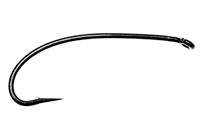
SL6 Black Spey Hooks
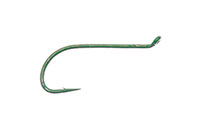
DU3 Limerick Spinner Hooks
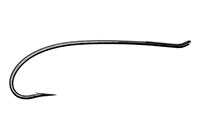
SL4 Single Bartleet Hooks
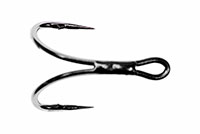
XD1 Tube Fly Double Hooks
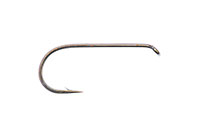
DD2 Flat Perfect Hooks
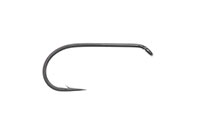
DD1 Black Terrestrial Hooks
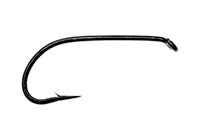
TD4 Old Limerick Wet Hooks
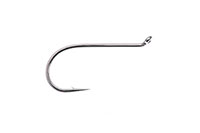
DU1 Silver May Hooks
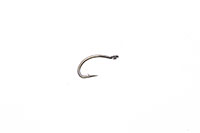
MU1 Flat Midge Hooks
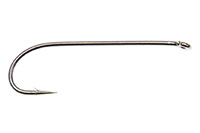
LD3 Long Limerick Hooks
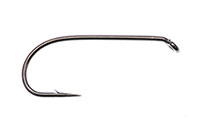
TD2 Summer Sproat Hooks
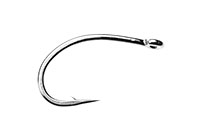
XS1 Tube Single Silver Hooks
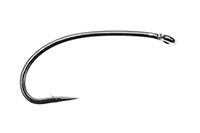
TD6 Siver Sedge Hooks

SL5 Black Spey Hooks

DU3 Limerick Spinner Hooks
- TROPHY CLUB
- FLY SHOW
- EXHIBITION
- MASTERS`
- FLY DRESSING CONTEST Archives
- TRAVELLER Archives
- TACKLE IMPRESSIONS Archives
- ANGLERS` PHOTO GALLERY Archives
- ----------------------------------------------
- トロフィークラブ
- フライショー
- エキシビション
- マスターズ
- フライドレッシング・コンテスト・アーカイヴ
- トラヴェラー・アーカイヴ
- タックル・インプレッション・アーカイヴ
- アングラーズ・フォトギャラリー・アーカイヴ
株式会社サワダ 185-0021 東京都国分寺市南町3-13-4
SAWADA'S INC. 3-13-4 Minamicho, Kokubunji, Tokyo 185-0021, Japan
写真・ドキュメントの無断転載を禁じます。
All the images and documents found on this site are owned by Ken Sawada and may not be used without permission.
But, link to this site is FREE.
Copyright © 2000 - 2024 SAWADA'S INC.. All rights reserved.
SAWADA'S INC. 3-13-4 Minamicho, Kokubunji, Tokyo 185-0021, Japan
写真・ドキュメントの無断転載を禁じます。
All the images and documents found on this site are owned by Ken Sawada and may not be used without permission.
But, link to this site is FREE.
Copyright © 2000 - 2024 SAWADA'S INC.. All rights reserved.
